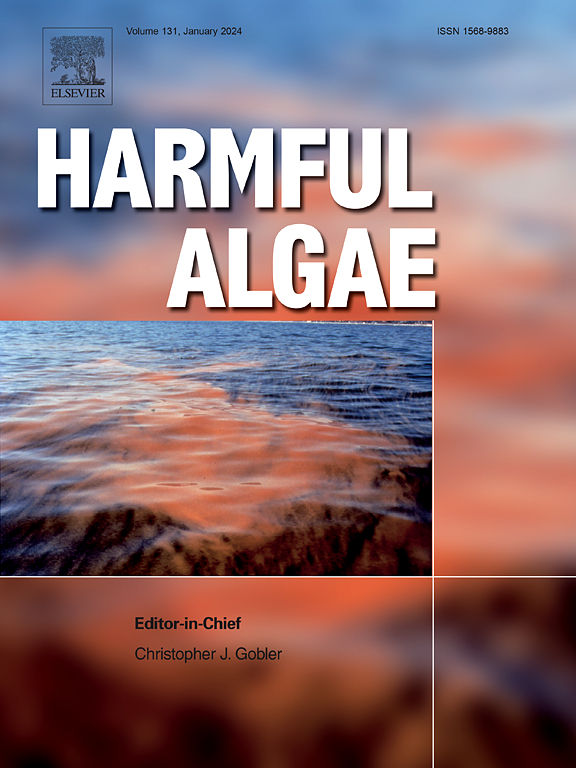Evidence of global dispersal of the harmful cyanobacterium, Raphidiopsis raciborskii, in lentic freshwaters through migratory waterbirds
IF 4.5
1区 生物学
Q1 MARINE & FRESHWATER BIOLOGY
引用次数: 0
Abstract
The cyanobacterium Raphidiopsis raciborskii has received much attention due to its global distribution and toxin production in freshwater. However, research on understanding the potential factors facilitating its geographical spread, the pattern of increasing range, and long-distance dispersal (LDD) of this species is very limited. In this study, we investigated the role of migratory waterbirds (using domesticated ducks as a proxy) and reservoirs (lentic waterbodies) in global distribution or dispersal of R. raciborskii. First, the global distribution of R. raciborskii under different reservoir scenarios was assessed through meta-analysis. The results showed a significant positive correlation between the global occurrence of R. raciborskii and the global number of reservoirs. Second, testing the capacity of R. raciborskii to spread via endozoochory or ectozoochory with ducks as a proxy of migratory waterbirds. The results indicated that R. raciborskii could be potentially dispersed through ectozoochory but not endozoochory, with a maximum carrying time of ∼96 hours corresponding to a maximum dispersal distance of ∼2300 km. In addition, the duck-carried R. raciborskii survived and could establish populations under suitable conditions. This study provides experimental evidence for the R. raciborskii dispersal through waterbirds. Overall, our results highlight that artificial reservoirs promote the increase of R. raciborskii populations, which could be dispersed across long distance via waterbird ectozoochory, thereby increasing the geographical range of R. raciborskii.

有害蓝藻Raphidiopsis raciborskii通过迁徙的水鸟在淡水中全球传播的证据
蓝细菌Raphidiopsis raciborskii由于其全球分布和在淡水中产生毒素而受到广泛关注。然而,对其地理传播的潜在影响因素、分布范围的增加模式和长距离传播的研究却非常有限。本研究探讨了迁徙水鸟(以家鸭为代表)和水库(原生水体)在鼠背背弧菌全球分布或扩散中的作用。首先,通过meta分析,对不同水库情景下的鼠耳鼠在全球的分布进行了评价。结果表明,全球鼠型田径量与全球水库数量呈显著正相关。其次,以迁徙水鸟为代表的野鸭为研究对象,检测鼠型恙虫病通过内源性或外源性传播的能力。结果表明,raciborskii可通过外区传播,但不能通过内区传播,最大携带时间为~ 96 h,最大传播距离为~ 2300 km。此外,在适宜的环境条件下,鸭携带的鼠型恙螨存活并能形成种群。本研究为鼠型裂裂裂螨通过水鸟传播提供了实验依据。综上所述,人工蓄水池促进了小仓鼠种群的增加,并可通过水鸟生态系统远距离分散,从而扩大了小仓鼠的地理分布范围。
本文章由计算机程序翻译,如有差异,请以英文原文为准。
求助全文
约1分钟内获得全文
求助全文
来源期刊

Harmful Algae
生物-海洋与淡水生物学
CiteScore
12.50
自引率
15.20%
发文量
122
审稿时长
7.5 months
期刊介绍:
This journal provides a forum to promote knowledge of harmful microalgae and macroalgae, including cyanobacteria, as well as monitoring, management and control of these organisms.
 求助内容:
求助内容: 应助结果提醒方式:
应助结果提醒方式:


